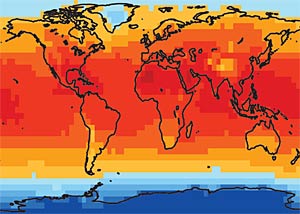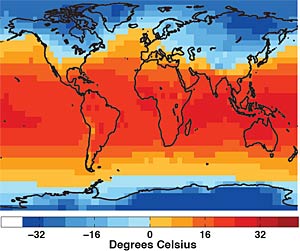This site is not for the average reader or for the weak at heart. This is hard core energy news with BLOGS by people who DO, teach not…. as Yoda might say:
http://www.energyblogs.com
Interesting ideas and viewpoints are constantly emerging on EnergyBlogs.com. We have enhanced the topics available for categorizing blogs so that you can easily reflect the dynamic conversations taking place within the global power industry.
To assist in this transition, existing blogs have been recategorized into the appropriate topics. We encourage you to review the recategorization to make sure the topics best reflect the content of your blog and update the categories if appropriate.
As always, we encourage you to start a new blog on one of the engaging new topics! If you have any questions, please contact service@energycentral.com.
:}
When this guy is on he is really on, but again this site is only for the hard core wonk:
http://thefraserdomain.typepad.com/
An item of interest to ethanol producers and other supporters of ethanol is this announcement by EPA, as further clarified by this announcement by EERE:

The U.S. Environmental Protection Agency (EPA) announced on November 17 that the 2009 renewable fuel standard (RFS) will require most refiners, importers, and non-oxygenate blenders of gasoline to displace 10.21% of their gasoline with renewable fuels such as ethanol. That requirement aims to ensure that at least 11.1 billion gallons of fuels will be sold in 2009. . . . While the RFS requirement is increasing by about 23%—from 9 billion gallons in 2008 to 11.1 billion gallons in 2009—the percentage requirement is increasing by nearly one third, from 7.76% in 2008 to 10.21% in 2009.
…
:}
He also only posts when he feels like it. The last post was in December. Did the Obama Election scare you away?
Then there is the worldwide wonks. Don’t look if you do not really really care.
http://peakenergy.blogspot.com/
The Guardian has a fairly technocractic article on the low value accorded to engineers in Britain and the value of implementing some large scale and tecnically complex infrastructure to rebuild the economy on “solid foundations” – Let engineers make Britain great again.
Orson Welles said film-making was the biggest electric train set a boy ever had. He was wrong. A new high-speed train line would be, if the boy or girl grew up to engineer it.
But in Britain, the train set is broken and has been packed away in the attic. We’re not proud of industry and we certainly don’t want our kids to grow up to be engineers. It’s a tragedy. It never used to be this way. We need to rediscover the power of engineering, its impact and contribution. It can stimulate young minds and it can stimulate the economy. …
So the young are innately curious about how and why things work. Yet what happens between childhood and adulthood? We stamp it out of them. Engineering gets stigmatised and we encourage our kids to become “professionals” – lawyers, accountants, doctors. Unlike in France or Germany, engineers are a bit of a nonentity here. Engineering is almost a dirty word. We’re told it’s “old industry” and that we are a “post-industrial nation”.
Part of the problem is that engineers are not accorded the status they deserve. We celebrate designers and architects, but forget the clever people who turn the theory into reality. The Millau bridge in France was designed by Norman Foster, but it was French engineer Michel Virlogeux who made it work. A magnificent achievement, but whose name do people remember? In 2005, Ellen MacArthur became the fastest person to sail round the globe, but little was made of Nigel Irens, who engineered her trimaran. …
:}
Damn it man…Engineers are important…but so are their mothers and they never mention them.
So YOU think YOU are into renewable energy, huh. Better eat your Wheaties for this one.
http://renewenergy.wordpress.com
2009-02-06 by renewenergy
The California Public Utilities Commission (CPUC) issued a quarterly staff progress report on the California Solar Initiative, showing that in 2008 Californians installed twice as many megawatts (MW) of solar power than the year before, and that demand for new solar projects continues to hit record levels.
Read Full Story
Posted in Policy, Solar Energy | No Comments »
Fraunhofer Sets CPV Efficiency Record of 41.1%
2009-02-06 by renewenergy
Researchers at the Fraunhofer Institute for Solar Energy Systems (ISE) have achieved a record efficiency of 41.1% for the conversion of sunlight into electricity using a concentrating solar PV system.
Read Full Story
Posted in Efficiency, Research, Solar Energy | No Comments »
2009-02-06 by renewenergy
In 2006 Texas overtook California to lead the nation in installed wind power generating capcity. Now, just three years later, wind turbines generating 8005-megawatts (MW), more than all the turbines spinning in California, Iowa and Minnesota, have outstripped the capacity of the high-voltage grid to move the power from windy west Texas to major cities where it’s needed.
Read Full Story
Posted in Economics, Electricity, Policy | No Comments »
:}
But to lighten up a little bit, then there is the financial side of things:
http://blogs.wsj.com/environmentalcapital/
February 9, 2009, 2:10 pm
Crude Reality: Oil Bulls See Hope in Stimulus Package
Posted by Keith Johnson
Crude oil futures in New York are still climbing Monday, jumping more than 5% in early trading before settling down to a more modest 1.5% increase.
What’s driving the uptick? There are theories for all tastes.
On the supply side, OPEC now says it is doing better at sticking to reduced production targets than most outside analysts give the cartel credit for. OPEC’s secretary general said today the cartel has already cut 80% of the 4.2 million barrels it’s meant to take off the market, and the cartel is ready to cut again at its March meeting.
On the demand side, President Obama’s cheerleading for the $800-odd billion stimulus package and signs the Senate could pass its version tomorrow are giving bulls hope there’s a quick fix in store for the battered U.S. economy that will rekindle demand for oil. Given that natural-gas futures are also up on Monday—the first four-day winning streak for gas since last autumn—there’s something to be said for the idea of a light at the end of the tunnel for the U.S. economy.
But the imminent passage of the stimulus package could be bullish for oil prices—without ever stimulating a lick of oil demand in the U.S.
:}
Fun stuff huh? Then there is the LONGEST running serious Energy Bog oh blog started in 2005
http://www.leonardo-energy.org/drupal/seblog
Sustainable Energy Blog
Printer-friendly version
Submitted by Bruno De Wachter on Thu, 2009-02-05 06:30.
Cheaper or more expensive than conventional cars?
When the cost of a plug-in vehicle is mentioned, it mostly refers to the purchasing and maintenance expenses. Sometimes, tax reductions given to electric vehicles (EVs) are taken into account, but the insurance cost is rarely discussed. This is somewhat strange, since the insurance on a conventionally fuelled car accounts for roughly one quarter of its fixed cost of ownership. So, what happens to this cost when switching from a conventional car to an EV?
:}
Tomorrow I will try my hand at Alternative Energy Blog sites. They are funner.
:}

Here are some inexpensive ways for you to add insulation to you existing windows that will save you money on your next heating or air conditioning bill.






















 Febuary
Febuary